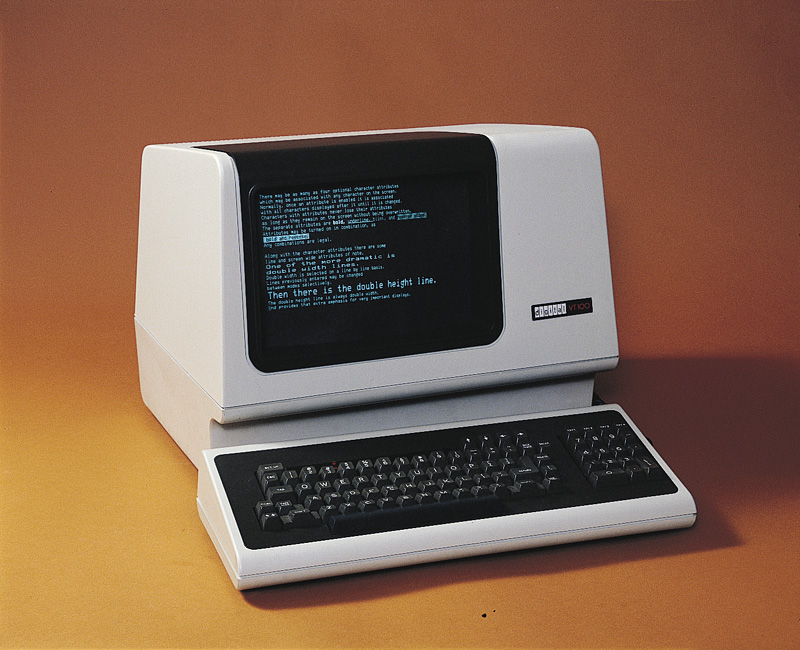Command-line interfaces (CLIs) evolved from batch monitors connected to the system console. Their interaction model was a series of request-response transactions, with requests expressed as textual commmands in a specialized vocabulary. Latency was far lower than for batch systems, dropping from days or hours to seconds. Accordingly, command-line systems allowed the user to change his or her mind about later stages of the transaction in response to real-time or near-real-time feedback on earlier results. Software could be exploratory and interactive in ways not possible before. But these interfaces still placed a relatively heavy mnemonic load on the user, requiring a serious investment of effort and learning time to master.
Command-line interfaces were closely associated with the rise of timesharing computers. The concept of timesharing dates back to the 1950s; the most influential early experiment was the MULTICS operating system after 1965; and by far the most influential of present-day command-line interfaces is that of Unix itself, which dates from 1969 and has exerted a shaping influence on most of what came after it.
The earliest command-line systems combined teletypes with computers, adapting a mature technology that had proven effective for mediating the transfer of information over wires between human beings. Teletypes had originally been invented as devices for automatic telegraph transmission and reception; they had a history going back to 1902 and had already become well-established in newsrooms and elsewhere by 1920. In reusing them, economy was certainly a consideration, but psychology and the Rule of Least Surprise mattered as well; teletypes provided a point of interface with the system that was familiar to many engineers and users.
The widespread adoption of video-display terminals (VDTs) in the mid-1970s ushered in the second phase of command-line systems. These cut latency further, because characters could be thrown on the phosphor dots of a screen more quickly than a printer head or carriage can move. They helped quell conservative resistance to interactive programming by cutting ink and paper consumables out of the cost picture, and were to the first TV generation of the late 1950s and 60s even more iconic and comfortable than teletypes had been to the computer pioneers of the 1940s.
Figure 2.3. VT100 terminal.

The VT100, introduced in 1978, was probably the single most popular and widely imitated VDT of all time. Most terminal emulators still default to VT100 mode.
Just as importantly, the existance of an accessible screen — a two-dimensional display of text that could be rapidly and reversibly modified — made it economical for software designers to deploy interfaces that could be described as visual rather than textual. The pioneering applications of this kind were computer games and text editors; close descendants of some of the earliest specimens, such as rogue(6), and vi(1), are still a live part of Unix tradition.
Screen video displays were not entirely novel, having appeared on minicomputers as early as the PDP-1 back in 1961. But until the move to VDTs attached via serial cables, each exceedingly expensive computer could support only one addressable display, on its console. Under those conditions it was difficult for any tradition of visual UI to develop; such interfaces were one-offs built only in the rare circumstances where entire computers could be at least temporarily devoted to serving a single user.
